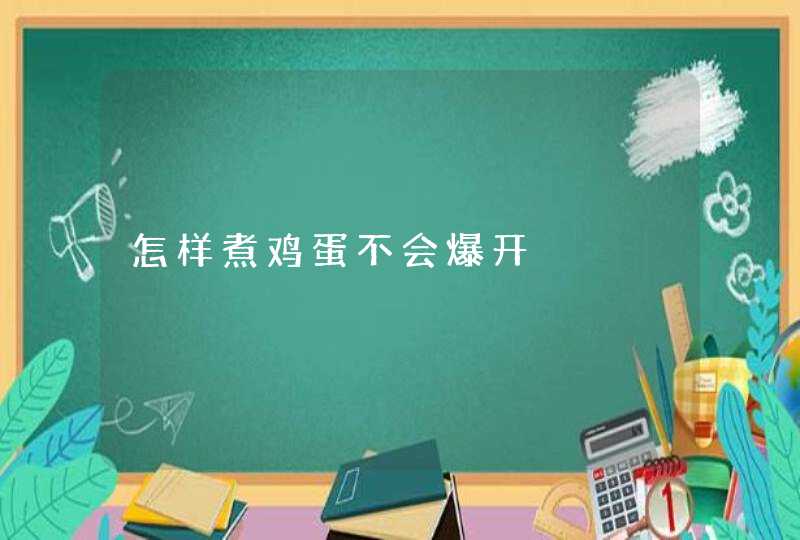短元音音标有7个,分别是:[i]、[ə]、[ɔ]、[u]、[ʌ]、[e]、[æ]。
长元音有5个,分别是:[i:]、[ε:]、[a:]、[ɔ:]、[u:]。
从表面上看,英语中的长元音与短元音的区别仅在于长音符号“:”,除此外几无差异,实际上却非这么简单。念长元音时,一定要注意音的长度。学长元音时的通病是,念的长度不够,甚至念得和短元音一样。例如:
把 seat 〔 si:t 〕(座位)念成 sit[sit] (坐)。
把 sheep[ ғi:p] (绵羊)念成 ship 〔 ғip 〕(轮船)。
辅音
(注:多数辅音的读音与拼音差别不大,可以通过拼音来进行谐音;还有一部分辅音没有对应的拼音字体,这里我们主要是针对/θ ð ʃ ʒ/这四个辅音)其中,/θ/和/ð/这两个音标,它们并没有相近似的拼音来对应,主要是靠嘴形来记忆。
/θ/――上下牙齿咬着舌头尖,发“斯"的音;/ð/――舌头顶上牙堂发拼音z一声;/ʃ/――师;/ʒ/――牙齿闭合,舌头虚碰牙齿发拼音r一声。
bee 蜜蜂 , see 看见 ,tea 茶,he 他,these 这些
ask 问 ,far远的,half 一半,aunt 阿姨,class 班,课
door门,short 短的,ball 球,draw 画画,talk 交谈
moon 月亮,room 房间,blue 蓝色的,ruler 尺子,do 做
shirt 衬衫,her 她,word 字,词,nurse 护士,third 第三
以上都是带有长元音的单词
关于语音的几个概念
1) 字母:语言的书写形式元音字母a, e, i(y), o, u,
2) 音标:词的语音形式
3) 音素:音的最小的单位英语中有48音素
4) 音节:由元音和辅音构成的发音单位ap'ple, stu'dent, tea'cher, un'der'stand
5) 元音:发音响亮,是乐音;口腔中气流不收阻碍;是构成音节的主要音英语中有20元音
6) 辅音:发音不响亮,是噪音;口腔中气流受到阻碍;不是构成音节的主要音英语中有28辅音
7) 开音节:a) 辅音+元音+辅音+e name bike home due; b) 辅音+元音 he, go, hi
8) 闭音节:a) 辅音+元音+辅音 bad, bed, sit, hot, cup; b)元音+辅音it
9) 重读音节:单词中发音特别响亮的音节
2 元音:(注意:下面空方括号是电脑无法输入的音标)
1) [i:] sea, he, see, piece, ceiling
2) [i] sit, build, miss, myth
3) [e] bed, desk, head,
4) [ ] bad, land, bank, stamp
5) [a:] car, fast, class, plant, calm, aunt
6) [ ] hot, want
7) [ ] door, more, sport, ball, warm, author, court, bought, caught
8) [u:] good, who, blue, soup,
9) [u] look, put, women, could
10) [ ] cup, come, blood, rough
11) [ ] girl, work, serve, nurse
12) [ ] cadre, ago, forget, polite, dollar, doctor, famous, Saturday
13) [ei] cake, they, play, eight, great,
14) [ai] bike, die, neither, light, try, find, height, eye
15) [ ] phone, cold, boat, soul, grow
16) [au] house, town
17) [ ] boy, oil
18) [ ] dear, idea, deer, here, fierce,
19) [ ] pear, care, there, fair
20) [ ] tour, poor,
3 容易混淆的元音
1) [e] [] bed bad; men, man; pen, pan; lend land
2) [i:] [ei] real rail; greet, great; mean, main; read raid
3) [e] [AI] bet bite; red write; said side, head, hide
4) [au] [ ] house horse; loud lord; south sauce; now nor; count corn; cloud clause
5) [au] [ ] found fond; gown gone; down don
4 辅音
1) [p] pen,
2) [b] bed, comb
3) [t] tell,
4) [d], day, played, wanted
5) [k] cold, sky, quick, school, back, accept, box
6) [g] big, go, guess, language
7) [m] man
8) [n] nine, knife, autumn
9) [ ] bank, uncle, English, sing,
10) [l] land, world
11) [r] read, write,
12) [f] five, cough, laugh
13) [v] voice, of
14) [ ] think,
15) [ ] this, bathe
16) [s] sit, miss, science, case, scarf
17) [z] zoo, close,
18) [ ] sure, she, social, nation
19) [ ] pleasure,
20) [h] hot, who, hour
21) [w] wall, what, answer
22) [j] yes
23) [ ] child, teach, catch
24) [ ] joke, bridge,
25) [ts] boats
26) [dz] goods
27) [tr] tree
28) [dr] dream
5 容易混淆的辅音
1) [v] [w] vet wet; vest west; vine wine; very well
2) [s] [ ] sink think; sort thought; miss myth; mass math
3) [z] [ ] closing clothing; breeze breathe; bays bathes
4) [n] [ ] thin thing; sin sing; ban bang win wing; ran rang
6 读音规则
1) 重读音节(见元音和辅音的例句)
2) 非重读音节 [ ] banana, student, today, after, [i] orange, secret, evening, very, Monday
7 特殊读音
1)音的连读:前面的词以元辅音结尾,后面的单词以元音开头,这样结尾的辅音要和开头的元音连读例如:not at all, half an hour, I love you and all after all
2)失去爆破:辅音爆破音或摩擦音后面跟的是爆破音、破擦音和摩擦等,前面的辅音要失去爆破例如:good girl, good student, good job, expression, school, extreme
3)音的同化:两个特殊的音碰到一起,会发出变异成特殊的音例如:Would you do it I am glad to meet you Can't you see it last year, this year,
8 重音
1)单词重音
A)双音节词
a)一般在第一个音节重读letter, sorry
b)有 a-, be-, de-, re-, res-, in-, im-, en-, em-, es-, ex-, con-, com-, dis-, mis-, pre-, per-, pro-, trans- 等前缀的词,第二个音节是重音a'bout, be'lieve, ad'dress, de'cide, re'port, con'demn, res'pect, com'pare, in'form, dis'cuss, im'press, mis'take, en'force, pre'pare, em'ploy, per'mit, es'cape, pro'duce, ex'claim,trans'late
c)有 de-, in-, re-, con-, pre- 等前缀的重音与词义和词类有关, 一般名词的重音在第一个音节上,其它的词性在第二个音节上'record, re'cord; 'insult, in'sult; 'conduct, con'duct; 'present pre'sent; 'content, con'tent
d)有些复合词和带有前缀 re-, ex-, un-, pre-, post-, 等的词,有两个重音'out'side, 're'tell, 'well-'known, 'un'real, 'fif'teen, 'Chi'nese, 'pre-'war, 'post-'war
B)多音节词
a)一般倒数第三个音节是重音'difficult, 'communist, 'family, e'conomy, oppor'tunity,de'mocracy
b)有一些双音节词,加了前缀和后缀成了多音节,但这些词按原来词根的重音读音'carefully, in'definite, 'comfortable, con'ductor, ac'cording, dis'turbance, 'complicated,es'tablishment,
c)词尾有-eous, -grahpy, -ial, -ian, -ic, -ics, -ience, ient, -ify, -ion, -ious, -ity, ive 后缀的词,重音在这些后缀的前一个音节上cour'teous, cal'ligraphy, edi'torial, his'torian, peri'odic, mathe'matics, ex'perience,suf'ficient, i'dentify, trans'lation, re'ligious, curi'osity, pro'tective
d)词尾有 -ain, -ee, -eer, -ese, -ette 后缀的词,重音在该后缀上,而且有一个次重音enter'tain, emplo'yee, mountai'neer, Japa'nese, ciga'rette
2)句子重音
A) 英语的节奏:(轻)-轻-重-轻-(轻)或重-轻-(轻)(轻)重
B) 英语句子的长短:是由句子中的重读词的数目决定的,而不是象汉语那样由句子中的汉字数目决定的
C) 实词重读(副词重读),虚词轻读(冠词,单音节介词,单音节连词,人称代词,反代词,物主代词,关系代词,相互代词,助动词,情态动词和系动词be
D) 实词不重读的特殊情况
a) 实词第二次出现 He thinks of that as a child thinks
b) 一个名词被第二个名词修饰 I met her in the railway station
c) 代替词 Which book do you want The small one
d) 感叹词中的 what 和how What a good day it is! How beautiful she is!
e) street 在专有名词中 Wangfujing Street
f)this在这些短语中,this morning/afternoon/evening
E)虚词重读的特殊情况
a) 情态动词,助动词和系动词be在句首,句尾和否定时Do you like it Yes, I do Are you a doctor Yes, I am Can you help me Yes, I can I don't like you He isn't a worker
b) 情态动词表示可能,惊奇和肯定时They may come this evening Can it be five already He must be in the room
c) 介词在句首和句尾In the box, he found a letter He is the person I talked with
d) 引导复合句的连词在句首If you wish, I'll visit you When he comes, I'll tell him
e)反身代词表示强调He couldn't come himself
我只知道单元音:/a;/ /i;/ /e/ /u;/ /|/ /i/ /u/
双元音: /ei/ /ai/ /Eu/ /au/ /Ci/ /iE/ /XE/ /uE/
长元音: /i:/ /C:/ /E:/ /u:/ /A:/
后元音: 前元音 /i:/ /i/ /e/ /Z/
中元音:/E:/ /E/
后元音:/A:/ /C/ /C:/ /u/ /u:/ /V/
以上就是关于短元音音标有哪些全部的内容,包括:短元音音标有哪些、长元音有哪些单词、长元音有哪些 短元音 双元音 清辅音 浊辅音有那些等相关内容解答,如果想了解更多相关内容,可以关注我们,你们的支持是我们更新的动力!


